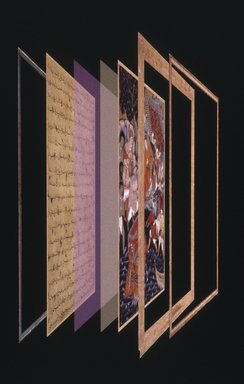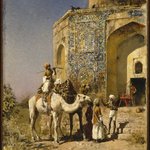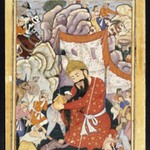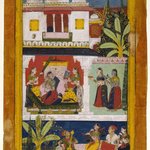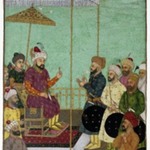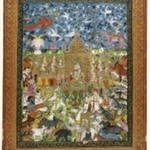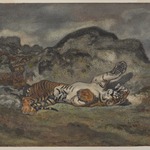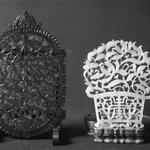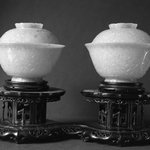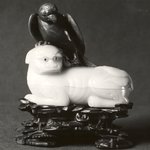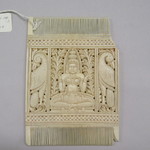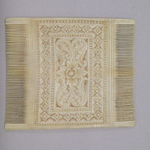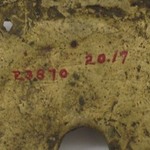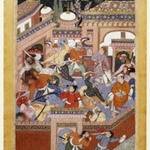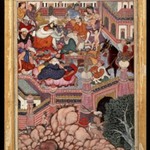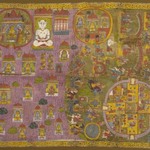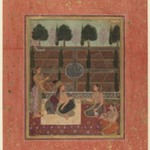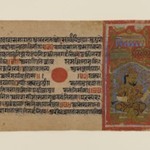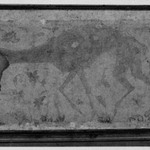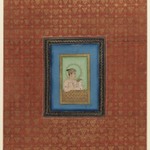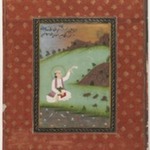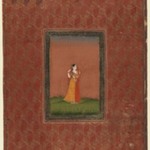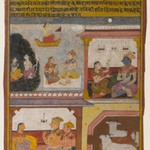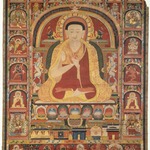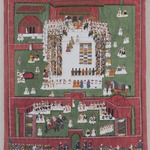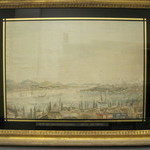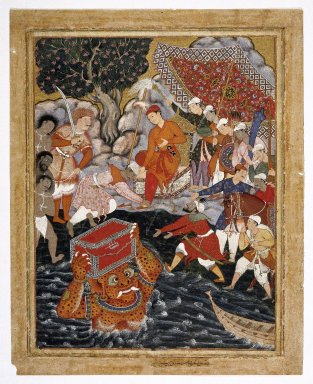

Indian. Arghan Div Brings the Chest of Armor to Hamza, 1562–1577. Opaque watercolor and gold on cotton, sheet: 31 1/8 x 24 15/16 in. (79.1 x 63.3 cm). Brooklyn Museum, Museum Collection Fund, 24.47 (Photo: Brooklyn Museum, 24.47_front_IMLS_SL2.jpg)
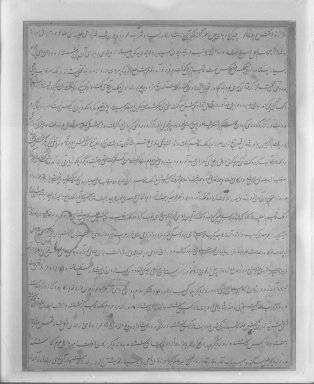
Indian. Arghan Div Brings the Chest of Armor to Hamza, 1562–1577. Opaque watercolor and gold on cotton, sheet: 31 1/8 x 24 15/16 in. (79.1 x 63.3 cm). Brooklyn Museum, Museum Collection Fund, 24.47 (Photo: Brooklyn Museum, 24.47_verso_glass_bw.jpg)

Indian. Arghan Div Brings the Chest of Armor to Hamza, 1562–1577. Opaque watercolor and gold on cotton, sheet: 31 1/8 x 24 15/16 in. (79.1 x 63.3 cm). Brooklyn Museum, Museum Collection Fund, 24.47 (Photo: Brooklyn Museum, 24.47_back_IMLS_SL2.jpg)
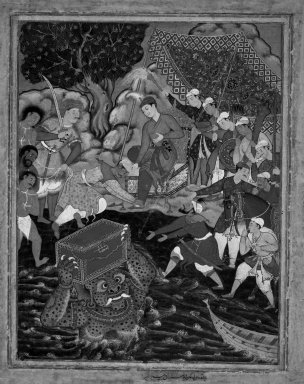
Indian. Arghan Div Brings the Chest of Armor to Hamza, 1562–1577. Opaque watercolor and gold on cotton, sheet: 31 1/8 x 24 15/16 in. (79.1 x 63.3 cm). Brooklyn Museum, Museum Collection Fund, 24.47 (Photo: Brooklyn Museum, 24.47_recto_bw_IMLS.jpg)

Indian. Arghan Div Brings the Chest of Armor to Hamza, 1562–1577. Opaque watercolor and gold on cotton, sheet: 31 1/8 x 24 15/16 in. (79.1 x 63.3 cm). Brooklyn Museum, Museum Collection Fund, 24.47 (Photo: Brooklyn Museum, 24.47_verso_bw_IMLS.jpg)

Indian. Arghan Div Brings the Chest of Armor to Hamza, 1562–1577. Opaque watercolor and gold on cotton, sheet: 31 1/8 x 24 15/16 in. (79.1 x 63.3 cm). Brooklyn Museum, Museum Collection Fund, 24.47 (Photo: Brooklyn Museum, 24.47_detail_bw_IMLS.jpg)

Indian. Arghan Div Brings the Chest of Armor to Hamza, 1562–1577. Opaque watercolor and gold on cotton, sheet: 31 1/8 x 24 15/16 in. (79.1 x 63.3 cm). Brooklyn Museum, Museum Collection Fund, 24.47 (Photo: Brooklyn Museum, 24.47_glass_bw.jpg)
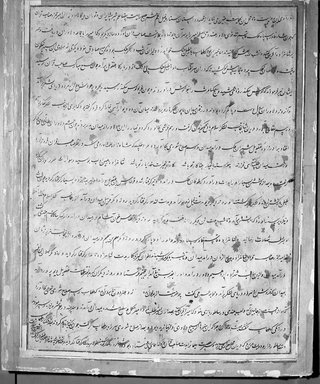
Indian. Arghan Div Brings the Chest of Armor to Hamza, 1562–1577. Opaque watercolor and gold on cotton, sheet: 31 1/8 x 24 15/16 in. (79.1 x 63.3 cm). Brooklyn Museum, Museum Collection Fund, 24.47 (Photo: Brooklyn Museum, 24.47_back_acetate_bw.jpg)
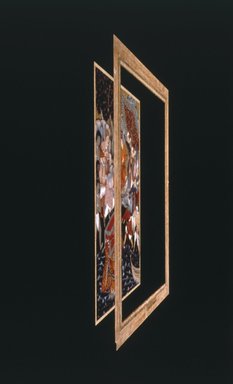
Indian. Arghan Div Brings the Chest of Armor to Hamza, 1562–1577. Opaque watercolor and gold on cotton, sheet: 31 1/8 x 24 15/16 in. (79.1 x 63.3 cm). Brooklyn Museum, Museum Collection Fund, 24.47 (Photo: Brooklyn Museum, 24.47_conservation1_SL1.jpg)

Indian. Arghan Div Brings the Chest of Armor to Hamza, 1562–1577. Opaque watercolor and gold on cotton, sheet: 31 1/8 x 24 15/16 in. (79.1 x 63.3 cm). Brooklyn Museum, Museum Collection Fund, 24.47 (Photo: Brooklyn Museum, 24.47_conservation3_reference_SL1.jpg)
Arghan Div Brings the Chest of Armor to Hamza
Asian Art
This painting depicts the demon Arghan bringing a casket of arms to Hamza. Emerging from the water, here rendered by frothy, curling waves, he presents a seemingly ferocious aspect with his spotted skin, flaming eyes, and sharp fangs projecting from a mouth with a rather frozen grimace. On the shore is Hamza, seated on a throne beneath a bright canopy held up by two poles and ropes. His sovereign status is indicated by a row of attendants on his left, carrying such insignia as the yak-tail whisk that is waved over Hamza's head.

